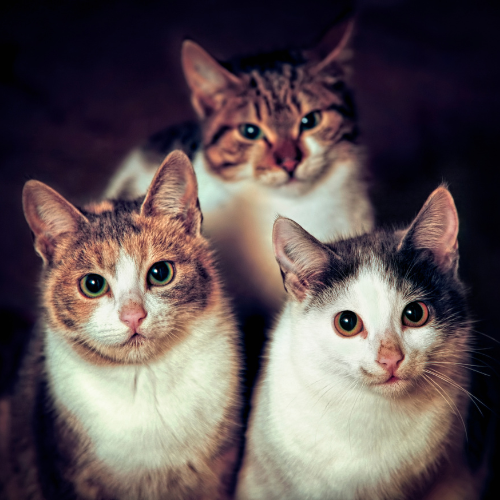When bringing a new cat home, it would be nice if the resident cats welcomed the newcomer with open arms – or paws. Unfortunately, that’s not how these introductions usually go. Cats that are meeting each other for the first time, or even old acquaintances, can often hiss or swat at each other or start an all-out brawl, leaving many owners to wonder, why don’t they like each other?
Cats are social animals and can have friends. But just like human relationships, cat bonds can depend on personalities, moods, and past history. You don’t become best friends with every person you meet. Why should we expect our cats to? We need to remember that our cats don’t get to choose their housemates. When introducing cats, we need to give them a reason to like each other.
Multiple Separate Resources
One of the most important ways to reduce inter-cat aggression is to decrease their competition. In the wild, feral cats can live solo or in colonies of up to 50 individuals. The deciding factor in group size is the amount of resources available. If there are lots of mice in an area, a large group of cats can coexist without competing for food. If food is scarce, the area might only support one cat who will have to keep others away.
In our homes, it doesn’t matter how big your house is. Even if they have lots of space but only one food bowl, the cats will have to compete for that valuable resource and are likely to display aggressive behaviors toward each other. Adding a few more food stations around the home will decrease their need to defend an abundant resource. In addition to dividing food locations, you should also provide multiple water bowls, litter boxes, and resting spaces (comfy beds and vertical perches). Just adding resources is sometimes enough to reduce tension between cats.
Slow Introductions
Introducing new cats or reintroducing established rivals should be a gradual process. If we again look at feral colonies, stranger cats are often attacked on sight. New cats may integrate into a group, but they live on the periphery for a while until they gradually become part of the group.
Cat introductions in a home should start with a full separation to mimic a new cat’s natural “life on the periphery.” When all cats in the home are comfortable, you can introduce one sense at a time, starting with scent. Scent is very important to how cats recognize each other and if they smell like an outsider, they might not be accepted into the group. You can swap bedding between the cats so they can get used to each other’s smells. You can also take a clean sock or washcloth to rub one cat then the other to help create a group scent. Then you can start introducing visual contact with a barrier like a screen door or pet gate. If they show comfort behaviors at this step, you can remove the barrier for short, supervised sessions.
Create Positive Associations
At any stage of the reintroduction process, the cats may start to show signs of discomfort or aggression around the other cat. This is when we can help them create positive associations. Anytime they are put together, we can make it a fun and exciting event. We want them to think, whenever I see the new cat, something really fun happens! You can make introduction sessions special a few different ways:
- Food or treats, especially the cats’ favorite treats, can make a session exciting for food-motivated cats. When using food, keep the cats a good distance apart. Cats don’t naturally eat in close proximity to other cats and food bowls too close to each other can create unnecessary stress.
- Interactive play sessions are another fun activity for cats. Save their favorite wand toy for these occasions. Just like with food, keep the cats apart so they do not have to share the same toy.
- Clicker training during introduction sessions can give the cats something else to focus on other than each other. You can practice simple behaviors like staying on a mat or targeting.
- Pattern games like Engage/Disengage can teach a reactive or aggressive cat to redirect their focus. To start this game, click when the cat looks at the other cat and offer a treat. Repeat that several times. Next, when they look at the other cat, wait until they look back at you – click and treat. This teaches them that turning their attention away from the other cat is more rewarding.
Introducing or reintroducing cats can go smoothly, while other cases can be long and difficult processes. If you need support integrating your multi-cat household, contact me at Pawsitive Vibes Cat Behavior and Training.

